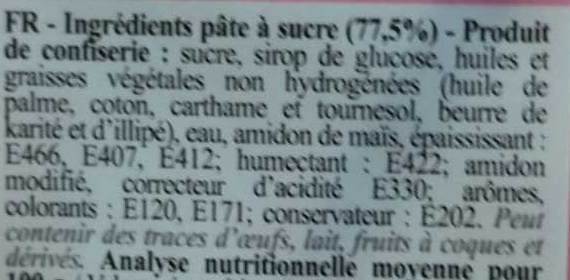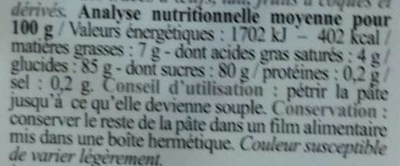Pâte à sucre rose - Scrapcooking - 100 g
This product page is not complete. You can help to complete it by editing it and adding more data from the photos we have, or by taking more photos using the app for Android or iPhone/iPad. Thank you!
×
Barcode: 3700392471712 (EAN / EAN-13)
Common name: Pâte à sucre (77,5%) - Produit de confiserie
Quantity: 100 g
Brands: Scrapcooking
Categories: Cooking helpers, Pastry helpers, Fondants
Countries where sold: France











